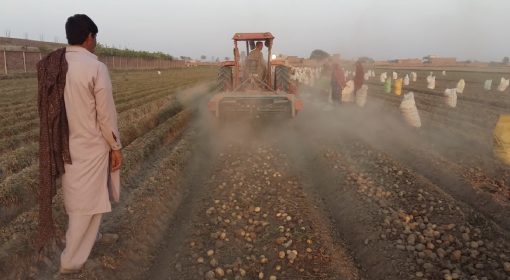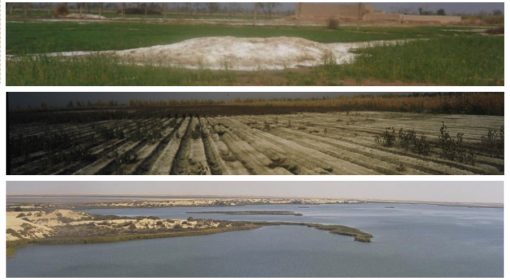Posted by Frank van Steenbergen and Martin van Beusekom
July 30, 2013
With a billion hectares of saline land and more clocking in every year, saline agriculture is as relevant as anything. Yet amazingly, we know really not much on how crops do in saline environments. Much of the ‘wisdom’ is based on old references that have never been updated. Most of all, we think that saline lands are ‘no go’ areas for some of the world’s main crops. But they are not necessarily.

This is all the work of the experimental test farm Zilt Proefbedrijf Texel, where water from the sea and from fresh inland resources are mixed in different concentrations to do repeat trials on multiple varieties. The big unique thing of the experimental farm is that they have taken salinity trials out of the lab and are doing the work where it belongs: in the field. After three years of dedicated work, the activities of Ziltproefbedrijf are upsetting decade-old conventions.
It is not only potatoes that outperform expectations – the same is true for sugar beets, coarse grains and may be the biggest surprise of all: lettuce. Growing on a floating island in saline water, lettuce has done amazingly well. There are many factors like the soil biota, soil conditions and salinity regimes that need to be sorted out – but the fact is that some varieties not only survive in saline conditions, but do very well.
 Additionally, there are crops that naturally love salt – that ones found only in saline conditions (halophytes). There are some amazing vegetables among these too that could find their way to consumer food plates.
Additionally, there are crops that naturally love salt – that ones found only in saline conditions (halophytes). There are some amazing vegetables among these too that could find their way to consumer food plates.
With a world that is a growing more salty, with a population that is increasing, with food habits becoming more exquisite and with fresh water and land in short supply, this is good news. It is also good news for farmers living in saline areas elsewhere – such as those in China, India, Pakistan and CIS. They are now often the most marginal of all – but who knows in the future they might not be.
For a closer look inside the test farm, watch the video below.

